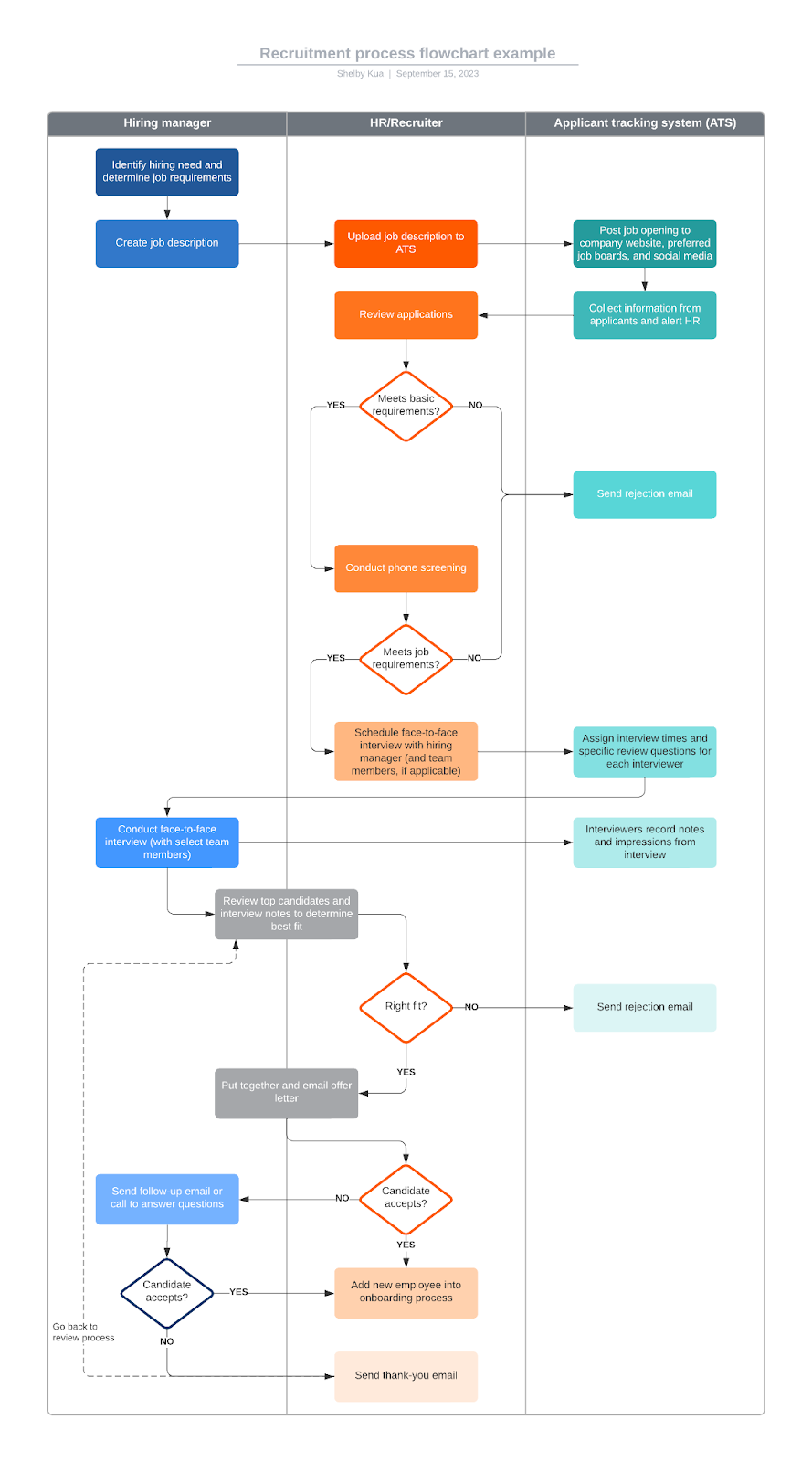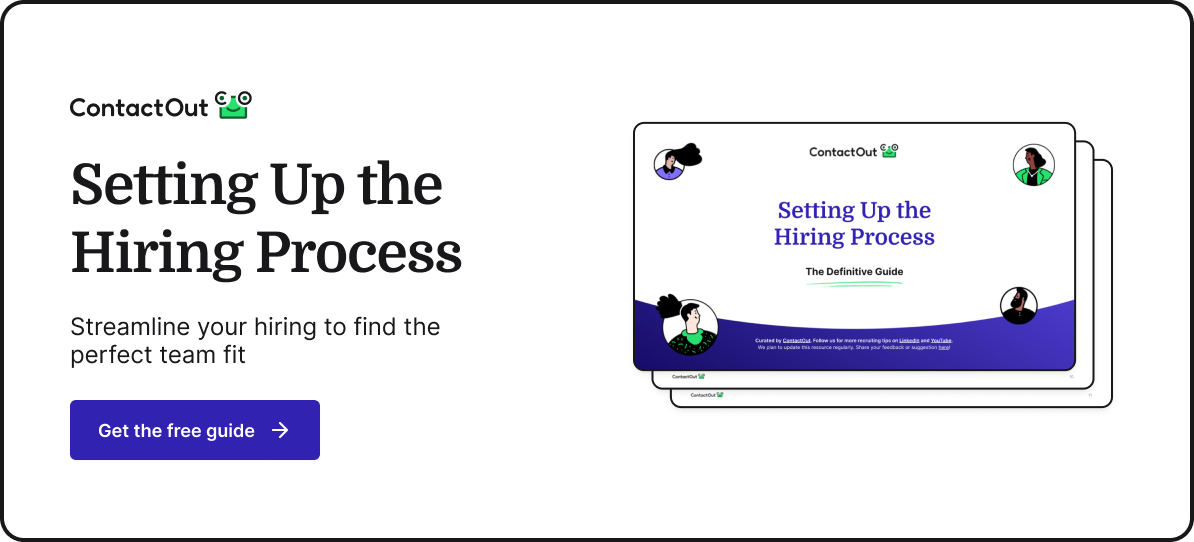We’re diving deep into the nitty-gritty of setting up a stellar hiring process.
From defining your goals to sealing the deal with the perfect candidate, we’ve got you covered!
💡 What will you learn by the end of this guide?
By the end, you’ll be equipped to:
- Define clear, actionable hiring goals.
- Collaborate effectively with all stakeholders.
- Craft an authentic and compelling job description.
- Master the art of advertising and recruiting.
- Review applications with a keen eye.
… and so much more, all the way to making that final job offer!
🧠 Why is it important?
Hiring isn’t just about filling a seat. It’s about finding the right fit, ensuring a seamless candidate experience, and building a team that drives your company forward. Getting the process right means setting up your team, and your company, for success.
✍️Here’s the step by step to do it:
1. Set your hiring goal:
- What’s Up? Every journey starts with a destination in mind. In recruitment, this means understanding the exact role and skills you’re looking for.
- Action Step: Define the role in detail. For instance, instead of just “software engineer,” specify “a software engineer with 3+ years of experience in Python and a track record of optimizing mobile app performance.”
2. Identify stakeholders:
- What’s Up? Hiring is a collaborative effort. It’s not just HR’s job; it involves managers, team leads, and sometimes even team members.
- Action Step: Create a list of everyone who’ll be part of the hiring process. Schedule a kickoff meeting to align everyone’s expectations and responsibilities.
3. Write a job description:
- What’s Up? This is your billboard. It’s how you communicate the role, responsibilities, and perks to potential candidates.
- Action Step: Draft a clear, engaging job description. Include role responsibilities, required skills, and any perks or benefits. Make it resonate with your company culture.
4. Advertise and recruit:
- What’s Up? Time to get the word out.
- Action Step: Post the job description on various platforms – job boards, LinkedIn, your company website, and even consider employee referrals. Diversify to maximize reach.
5. Review applications:
- What’s Up? The applications are pouring in. Time to sift through.
- Action Step: Create a checklist of must-have skills and nice-to-have skills. Review applications against this checklist, ensuring you give each one a fair shot.
6. Conduct a phone screen:
- What’s Up? Before diving into in-depth interviews, a preliminary chat can save everyone time.
- Action Step: Prepare a list of questions that gauge the candidate’s interest, basic qualifications, and cultural fit. Keep it conversational.
7. Assess skills:
- What’s Up? You need proof of their prowess.
- Action Step: Depending on the role, design relevant tests or tasks. For a designer, it might be a design challenge. For a marketer, perhaps a campaign pitch.
8. Conduct on-site interviews:
- What’s Up? The real deal. This is where you get to know the candidate beyond the resume.
- Action Step: Plan a structured interview process. This could involve multiple rounds, including technical interviews, cultural fit assessments, and discussions with senior leadership.
9. Make a decision:
- What’s Up? After all the assessments and discussions, it’s decision time.
- Action Step: Gather all interviewers for feedback. Discuss and weigh the pros and cons of each candidate. Aim for a consensus.
10. Background and reference check:
- What’s Up? Just to cross the Ts and dot the Is.
- Action Step: Contact the provided references and, if necessary, conduct a background check to verify the candidate’s history.
11. Make a job offer and negotiate:
- What’s Up? The final stretch. Time to make it official.
- Action Step: Draft a compelling offer letter. If the candidate negotiates, be prepared to discuss and find a middle ground that works for both parties.
👋 Here’s a recruitment process flowchart from Lucidchart for you to visualize the process (downloadable template 🔗 below):

🫧 Here’s an example of it:
Let’s say you’re hiring for a “Digital Marketing Specialist” for your startup. Your goal is to boost online sales by 20% in the next quarter. After collaborating with the sales and tech teams, you draft a detailed job description highlighting skills in SEO, PPC, and content marketing. You post the job on LinkedIn, Indeed, and even get a couple of referrals from your team.
Among the applications, Mia’s resume stands out. After a positive phone screen, you give her a task: draft a mini digital marketing strategy for a new product. She nails it. The on-site interview further confirms her fit, both technically and culturally. Feedback from the interview panel is overwhelmingly positive. A quick chat with her references solidifies your decision, and after a bit of negotiation on the starting date, Mia is set to join your team!
🏃 Next steps:
- Onboarding:Once the candidate accepts the offer, ensure a smooth transition into the company. This includes orientation, training, and introductions to key team members.
- Feedback Loop:After the hiring process, gather feedback from the new hire about their experience. This can provide valuable insights for refining future hiring processes.
- Continuous Learning:The world of recruitment is ever-evolving. Stay updated with the latest trends, tools, and best practices in hiring. Consider attending workshops, webinars, or recruitment training sessions.
- Relationship Building: Even after the hiring process, maintain a relationship with the candidate. Regular check-ins, especially during the initial months, can ensure they’re settling in well and are aligned with company goals.
📚Further resources:
- 📌 How to build a recruitment process: Downloadable flowchart template
- 📌 Hiring Process Steps: Hiring Success Glossary
- 📌 How to build a best-in-class hiring process













